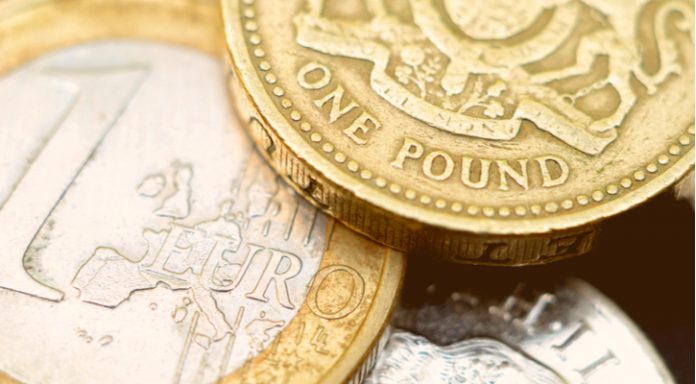- Pound (GBP) remains in recovery mode, extending gains for a third straight day despite concerns a Brexit trade deal won’t be reached
- Strong manufacturing data and hopes of a V shaped recovery boosted sterling on Wednesday
- Euro looks to unemployment data which is expected to show only a slight increase
- Pound Euro exchange rate (GBP/EUR) targets €1.11
The Pound is advancing, extending gains into a third session. The Pound Euro exchange rate settled +0.4% at €1.1086 on Wednesday, towards the top of the daily traded range.
At 05:15 UTC, GBP/EUR trades +0.08% at €1.1090.
The Pound outperformed in the previous session amid a broad risk on sentiment on vaccine hopes and following upbeat comments from Bank of England’s Chief economist Andy Haldane. Andy Haldane had said that Britain could be on course for a V-shaped recovery, although he did warn over persistent high unemployment.
Data on Wednesday supported his beliefs with the UK manufacturing sector returning to expansion in June, printing at 50.1, in line with the preliminary reading.
The Pound pushing higher despite a Brexit trade deal looking increasingly more elusive. German Chancellor, Angela Merkel, told the EU that it needs to prepare for the possibility that an agreement between the two sides might not be reached.
Today there is no high impacting UK data, leaving the Pound vulnerable to sentiment and to the moves of the Euro.
The Euro traded broadly higher versus its major peers on Wednesday, albeit lower versus the Pound after stellar German retail sales data, better than forecast unemployment figures and encouraging manufacturing PMI numbers. The macro data coming out of the Eurozone points to a solid rebound from April lows with economies reigniting as lockdown measures ease.
Amidst the upbeat data, the IFO Institute damped the tone, downgrading German GDP outlook. Just 5 weeks earlier the IFO Institute had forecast 10 % growth in 2021 for Germany, that has now been revised downward to 6.4%.
Looking ahead Eurozone unemployment figures will be in focus. Analysts are expecting the unemployment rate to tick slightly higher to 7.7%, up from 7.3%. This is still very low compared to the US. The reason for this is because government wage support schemes are delaying any impact on the labour market and clouding the true picture of the labour market.





